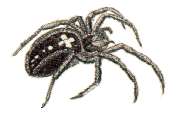 | Pajek datasets
from the book
|
Exploratory Social Network Analysis with Pajek
Wouter de Nooy, Andrej Mrvar, Vladimir Batagelj
Corporate interlocks in Scotland (1904-5).
Dataset Scotland
Description
Scotland.net: Pajek two-mode network with 244 vertices (136 multiple
directors and 108 companies), 356 edges (directorate), no arcs, no
loops.
Industrial_categories.clu: classification of the 108 companies according to
industry type (1 - oil & mining, 2 - railway, 3 - engineering & steel, 4 -
electricity & chemicals, 5 - domestic products, 6 - banks, 7 -
insurance, 8 - investment.
Capital.vec: the total capital or deposits of the (108) companies (in 1,000
pound sterling).
Scotland.paj: Pajek project file with the data described above.
Download
complete dataset (ZIP, 5K);
Access DB (ZIP, 37K)
Background
This dataset contains the corporate interlocks in Scotland in the beginning
of the twentieth century (1904-5). In the nineteenth century, the industrial
revolution brought Scotland railways and industrialization, especially heavy
industry and textile industry. The amount of capital needed for these large
scale undertakings exceeded the means of private families, so joint stock
companies were established, which could raise the required capital. Joint
stock companies are owned by the shareholders, who are represented by a
board of directors. This opens up the possibility of interlocking directorates.
By the end of the nineteenth century, joint stock companies had become
the predominant form of business enterprise at the expense of private
family businesses. Families, however, still exercised control through
ownership and directorships.
The data are taken from the book The Anatomy of Scottish Capital by
John Scott and Michael Hughes. It lists the (136) multiple directors of the
108 largest joint stock companies in Scotland in 1904-5: 64 non-financial
firms, 8 banks, 14 insurance companies, and 22 investment and property
companies (Scotland.net). In this dataset, which was compiled from the
Appendix of Scott & Hughes' book, note that two multiple directors (W.S.
Fraser and C.D. Menzies) are affiliated with just one board so they are not
multiple directors in the strict sense.
The companies are classified according to industry type: 1 - oil & mining, 2
- railway, 3 - engineering & steel, 4 - electricity & chemicals, 5 - domestic
products, 6 - banks, 7 - insurance, and 8 - investment. In addition, there is a
vector specifying the total capital or deposits of the firms in 1,000 pound
sterling.
References
- John Scott & Michael Hughes, The anatomy of Scottish capital: Scottish
companies and Scottish capital, 1900-1979 (London: Croom Helm,
1980).
- W. de Nooy, A. Mrvar, & V. Batagelj, Exploratory Social Network
Analysis with Pajek (Cambridge: Cambridge University Press, 2004),
Chapter 5.
History
- Original authors: are John Paul Scott (1949)
(
scottj@essex.ac.uk,
University of Essex) &
Michael Hughes (1947, University of Lancaster in 1980, not listed now).
- Data compiled into Pajek data files by W. de Nooy, 2001.
1. January 2004
Pajek datasets /
Exploratory SNA
|